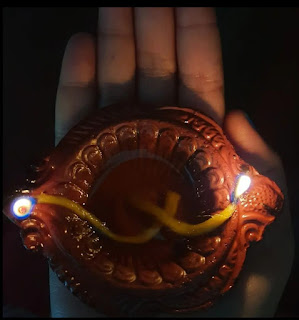"Take the light from the lamp in your eyes and now travel with your eyes"
These were the directions given to us by our instructor Sooraj Nambiar in a workshop called Lochanam which is the Sanskrit word for eyes. This particular workshop is one of the segments of the larger world of Kutiyattam, the ancient form of Sanskrit theatre which requires training of the highest order. Education in storytelling through dance, movement, music as well as knowledge of the Sanskrit text is at the center of this learning that immerses the performer in training that begins in childhood and carries onto adulthood. It is true immersion.
I had known about Kutiyattam through actor friends who knew others who went through years of training. I also chanced upon a talk by The Sanksrit Channel you can listen to it here so when I saw the opportunity for Lochanam I decided to participate.
Every morning we sat practicing the art of looking far ahead trying our best to not blink to follow lines diagonal, horitzontal and vertical across . At the instruction of our teacher we imagined with our eyes, we visualized scenes and stories that we were only to express with our eyes. An exercise our teacher asks us to act out with only our eyes includes scenes with deer and tigers, the different gaze of each creature, the fear in the eyes of one and the valor in the other.
The exercises get more detailed.
Of all the training I have gathered in theater, mostly western theater techniques, I have never had the opportunity to concentrate on the function of eyes with such detail. And I know this is only the surface. I have learned about the focus and attention given to each expression and gesture of a performer's body before it is ready to participate in storytelling.
Here's the thing, let me give it to you straight.
You see in other acting classes we may do a scene of "normal" people and situations around the dinner table but in Kutiyattam eye acting workshop we are deers and tigers where the deer child goes over to the tiger mother whose cubs are drinking her milk so the deer sneaks in and drinks the milk too. So yes go ahead and emote that with your eyes now. No need to use hands. And when you are a baby elephant who grabs the tooth of a sleeping lion with his trunk you may just use your eyes for that whole interaction, no need to use hands just may be sway your head a little bit from side to side to show the joyful sways a baby elephant may engage in. Your eyes can do the job of the trunk, your eyes can do everything. Now after exercises and learning that blinking is the actual problem, every time I blink I feel like I am making a mistake. The exercise is to not blink. To avoid blinking. To maintain focus.
An anecdote shared by our teacher Sooraj Nambiar was about an older performer in his late 90s practicing lochanam everyday even when he is unable to perform in the old age. When asked why he continues his answer was
"for my next life when I return as a Kutiyattam performer."
Human body serves us well. We take care of it and do the best we can. We have to live too. We have to be there for our people and make a living.
The spirit sees beyond however.
Spirit is undying.
Spirit tells us to practice and keep going
because life every day I suppose is lived for the body
but the knowledge of
drawing circles and shapes on the canvas
with our eyes
is held by our soul.
It is not the eyes says our teacher, it’s the imagination.
I am attending these short workshops, trying to absorb what I can. I am humbled to know that there are these opportunities I can take up to fill up the cup of knowledge just a lit bit more.
In the upcoming four days I look forward to being part another workshop, in person this time which will take me a little further in this journey of knowing more about Kutiyattam as I take part in a four day workshop at Matrabhumi Festival, the biggest literary festival of South India which is also hosting the
Kutiyattam Residency Workshop.
More about the workshop
Curated by Kapila Venu @MBIFL’23
Over the four days, the participants will be introduced through an immersive experience to the various aspects of this ancient storytelling and theatre tradition - Koothu and Kutiyattam. We will look at the historical, mythical, legendary, aesthetic, technical, performative, ritual, spatial, evolutionary, and innovative aspects of this art form. We have been able to include some of the most accomplished artists, masters, and scholars from different generations to lead sessions and perform
note this particular photo is not from the workshop,
it is a photo I took backstage during the makeup for Ramleela
that I participated in 2019 in Delhi.
I thought it was suitable for this conversation
on the expression of the eyes.



Comments
Post a Comment